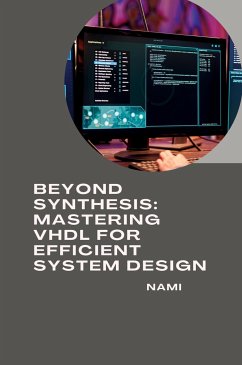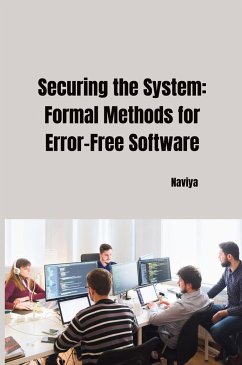
The Future of Concurrency: Zero-Cost Abstractions for Guaranteed Memory Safety
Versandkostenfrei!
Versandfertig in 6-10 Tagen
28,10 €
inkl. MwSt.

PAYBACK Punkte
0 °P sammeln!
The ever-growing complexity of software demands robust solutions for concurrent programming. Traditional approaches often introduce trade-offs between performance and programmer sanity. This article explores the exciting prospect of zero-cost abstractions for guaranteed memory safety - a potential game-changer in the realm of concurrency.The Concurrency ConundrumModern applications are inherently concurrent. Multi-core processors and asynchronous operations necessitate the ability to execute tasks simultaneously. This paradigm unlocks parallelism, improving responsiveness and throughput. Howev...
The ever-growing complexity of software demands robust solutions for concurrent programming. Traditional approaches often introduce trade-offs between performance and programmer sanity. This article explores the exciting prospect of zero-cost abstractions for guaranteed memory safety - a potential game-changer in the realm of concurrency.The Concurrency ConundrumModern applications are inherently concurrent. Multi-core processors and asynchronous operations necessitate the ability to execute tasks simultaneously. This paradigm unlocks parallelism, improving responsiveness and throughput. However, concurrency introduces challenges:Data Races: When multiple threads access the same memory location without proper synchronization, data corruption can occur. This can lead to crashes, unpredictable behavior, and security vulnerabilities.Deadlocks: Threads can become stuck waiting for resources held by each other, creating a frustrating standstill.Livelocks: Threads enter a busy-waiting loop, perpetually attempting to acquire resources that are never released.Traditional Approaches and Their ShortcomingsSeveral techniques exist to manage concurrent programming:Mutexes and Semaphores: These low-level synchronization primitives provide control over shared resources. However, manual usage can be error-prone, leading to deadlocks and difficult-to-debug code.Monitors: Higher-level constructs encapsulate data and synchronization logic, improving safety and clarity. However, they can introduce overhead and limit flexibility.












